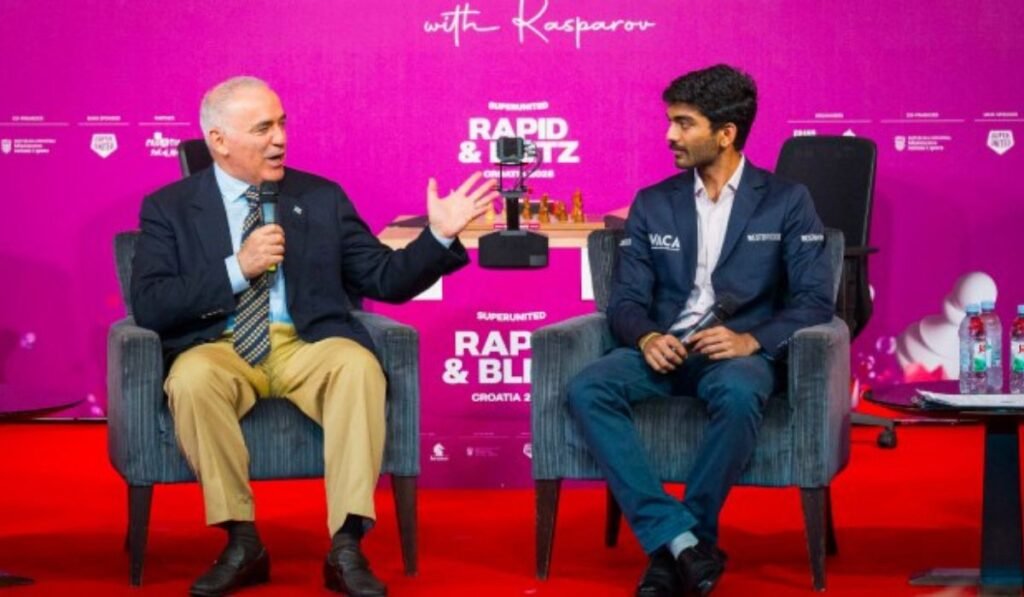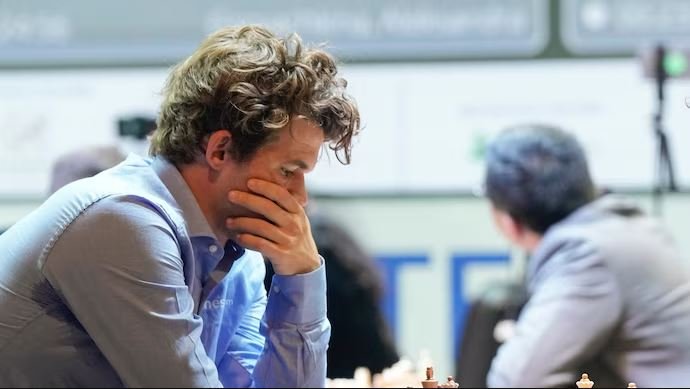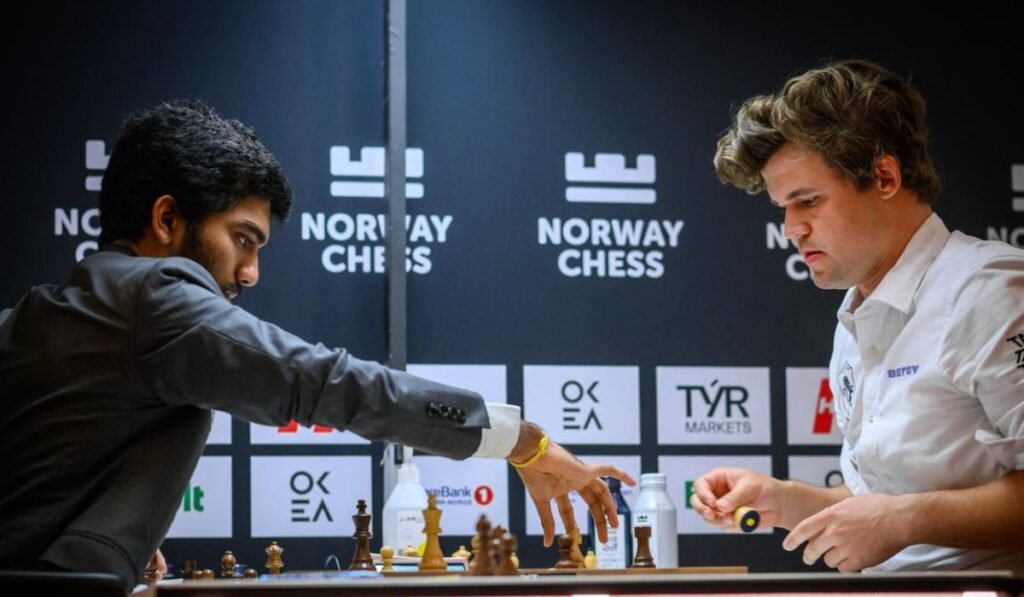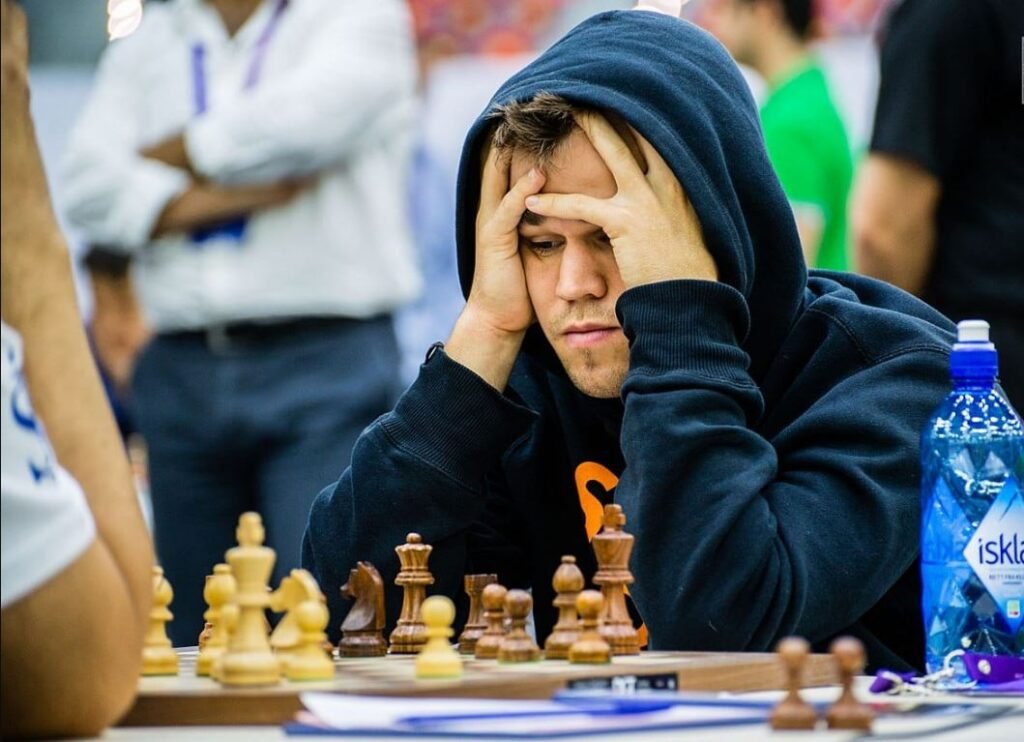Playing Gukesh is ‘like playing a computer!’ says Kasparov

The man with the ‘golden arms’, one of the predecessors of the present-day champions on the world champion’s throne, hailed as the world’s greatest chess player, Garry Kasparov, was doing commentary for the game which Gukesh bagged his pocket, dethroning Magnas Carlsen again for the second consecutive time in Jagreb. Kasparov could not resist admiring Gukesh in commentary, and plenty of his praise came even before Gukesh had managed to turn the game around and put Carlsen under pressure before going on to force the world no 1 to resign. Kasparov, who famously played some much-publicised games in the 1990s against machines like IBM’s Deep Blue, compared Gukesh to a machine. “He’s a player that’s hard to beat. Gukesh has many lives (in each game). You have to beat him many times. There is some resemblance (to computers). He has a resilience that reminds me of computers. He’s probably the most resilient player. Even Magnus has other advantages. But when it comes to resilience, he’s absolutely amazing. If you look at the infamous game against Magnus (at Norway Chess), I don’t recall Magnus ever losing a game when he had an advantage of +3 or +4. Why he reminds me of computers is that with machines, you lose your concentration, and you’re dead. With Gukesh, you have to beat him five times,” Kasparov said. After the defeat, Kasparov had said: “Now we can question Magnus’ domination. This is not just his second loss to Gukesh; it’s a convincing loss. It’s not a miracle… or that Gukesh just kept benefitting from Magnus’ terrible mistakes. It was a game that was a big fight. And Magnus lost.”
Delhi’s 9-year-old chess prodigy Aarit Kapil forces Magnus Carlsen to draw!

Arit Kapil, the nine-year-old chess prodigy drew the attention of the chess fraternity on Wednesday. The chess player had almost stunned the five-time World Champion Magnus Carlsen in an online chess competition named ‘Early Titled Tuesday’. Playing from his hotel room in Georgia, where he is currently competing in the Under-10 World Championship, Aarit faced the five-time world champion with poise well beyond his years. For much of the match, the Indian prodigy held the upper hand, even maneuvering Carlsen into what analysts later called a “completely lost position.” With a rook versus two minor pieces in the final endgame, Aarit had an advantage that could have spelled defeat for one of the greatest players to have ever played the sport. However, with the clock ticking down and only seconds remaining, he was unable to convert the win and had to settle for a well-earned draw. Still, the performance sent shockwaves through the chess world—few players, let alone schoolchildren, have come this close to toppling Carlsen. Arit Kapil is quickly becoming one of the most talked-about young names in the global chess circuit. Hailing from Delhi, he first made headlines in December 2024 by defeating Grandmaster Raset Ziatdinov at the KIIT International Open in Bhubaneswar. At just nine years, two months, and eighteen days old, Aarit became the youngest Indian ever to beat a GM in classical play, and the third-youngest globally—behind only Singapore’s Ashwath Kaushik and Serbia’s Leonid Ivanovic.
Gukesh reminds of my form in 2008-2009, says Magnus Carlsen

Magnus Carlsen believes the next generation of chess superstars, including reigning world champion D. Gukesh is on the right track. But at the same time, the five-time world champion believes the youngsters need to gain maturity in several aspects of the game to catch up with the experienced set, including himself, Fabiano Caruana, and Hikaru Nakamura. Carlsen also praised the playing style of Gukesh to his from over 15 years ago, considering the control over games. “I think the kids are on track but they are not like way ahead of way ahead of schedule. Looking at the Gukesh game I feel it is quite similar to what I was doing in 2008, and in 2009, when I was when I was breaking through it wasn’t always so pretty. There was this tournament for instance, Linares in 2008, where Vishy [Viswanathan Anand] was cruising in the first place and I was just playing crazy games and honestly getting more out of the positions than kind of my pure chess skill suggested,” said Carlsen after winning Norway Chess 2025. Earlier in the tournament, Gukesh had claimed his first classical win over Carlsen and was in the race for a maiden Norway Chess title going into the final round. But the Indian Grand Master succumbed to a defeat to Caruana and eventually settled for third in the standings. Carlsen lauded Gukesh’s ability to stay in title contention in elite tournaments, despite his error-prone ways. “You can see in certain games that in parts of the game, Gukesh and Arjun are far behind me, Fabian, and Hikaru. But we’re also the very best players in the world. They’re not supposed to be our equals in every part of the game. The fact that Gukesh can actually fight for tournament victory despite having so many bad positions which he will probably not be happy with himself; is encouraging and I think it’s typical, that’s what kids do as part of the process,” added Carlsen.
Magnus Carlsen shows off incredible memory by recreating 26-piece position after 2-second glance at chess board!

Tales of Magnus Carlsen’s memory have always been part of chess folklore. There are stories of how by the time he was six, he had memorised the flags and names of over 200 countries of the world. Now, in a recent video, he has shown off his impressive memorisation skills by recreating a 26-piece position on the chessboard after looking at it for just two seconds. In the video, posted online by the chess app Take Take Take, Magnus Carlsen is given memory tests by grandmaster David Howell, who allows Carlsen various time limits — 60 seconds, 30 secs, 15 secs, 10, 5 and then finally two seconds — to look at a position before asking him to recreate the position on the board in a minute. On each occasion, there are 26 pieces on the board. The position that Carlsen was asked to recreate after looking at the board for just two seconds had appeared during Bobby Fischer’s game against Donald Byrne in 1956 when Fischer was just 13. Carlsen not just recreated the position but then also started to play out the next moves that were played in the game with almost full accuracy. Significantly, FIDE CEO Emil Sutovsky reminded chess fans that he hasn’t forgotten about the jeans controversy, and took another dig at Carlsen. He wrote, “Now a serious question – as we get back to review the dress code for FIDE events this year. Carlsen was recently in action at the Grenke Chess Freestyle Open 2025, where he came out on top with a perfect 9/9 score. Posting a photo of the Grenke prize ceremony, Sutovsky questioned the dress code of the top GMs on the stage, along with Jan Henric Buettner.